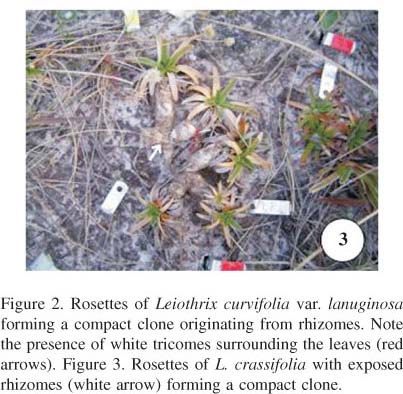Leiothrix is endemic of South America and includes 37 species, 25 of which occur in the state of Minas Gerais. Nineteen of those occur in the "Serra do Cipó", a mountain chain, located in the southern portion of the Espinhaço mountain range. This study examines vegetative propagation strategies of four species of Leiothrix, endemic to the Minas Gerais portion of the Espinhaço mountain range. For each species we established permanent plots, where we marked 30 to 51 rosettes or clones, and then took morphological and phenological measurements. Leiothrix crassifolia (Bong.) Ruhland and L. curvifolia var. lanuginosa (Bong.) Ruhland are rhizomatous, forming compact clones. Leiothrix vivipara (Bong.) Ruhland does not produce rhizomes, but is pseudoviviparous, i.e., produces numerous ramets originating from inflorescences. These ramets are formed precociously, and the flower heads do not touch the ground. In Leiothrix spiralis (Bong.) Ruhland both of these strategies are seen: it is both rhizomatous and pseudoviviparous. In this species, the ramets are formed late, only after the flower head has touched the ground. One of the typical conditions of the rupestrian grasslands is soil water shortage in some periods of the year and nutrient scarcity all year round. These conditions might have created an ideal ecological scenario for the evolution of both pseudovivipary and rhizomatous clonal growth in Leiothrix.
clonal growth; Eriocaulaceae; Leiothrix; pseudovivipary; rupestrian grasslands













